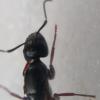Update 1-9-2020
My garden was blanketed in snow a few days ago, and everything is in deep dormancy. I used some of my extra free time over the holidays to plant a lot of new native plants seeds. Most of these seeds I either gathered off my garden plants or from wild plants in my area. Some special new seeds I found were dawn redwood seeds. This is a species of redwood that was once found in North America, but was thought extinct until being rediscovered in a remote Chinese valley about 60 years ago. There is a nice specimen growing in downtown Leesburg, VA, so I decided to give it a shot. How cool would it be to have a redwood in your yard? It was once native here, so I feel ok growing it.
The other species I planted are:
Echinacea purpurea (purple coneflower)
Rudbeckia laciniata (cutleaf coneflower)
Rudbeckia fulgida (black eyed susan)
Asclepias syriaca (Common milkweed)
Apocynum canabinum (dogbane)
Campsis radicans (trumpet creeper vine)
Parthenocissus quinquefolia (Virginia creeper vine)
Eupatorium fistulosum (hollow stem Joe Pye weed)
Pinus Virginia (Virginia pine)
I hope to continue planting some more species soon. These are all native species that I've documented benefiting ants and other insects in this journal.
I do a simple process of winter sowing because the majority of these seeds need a cold, damp period of a month or more before they will germinate. The easiest way to do this is to sow the seeds in pots, cover them with shade cloth, and leave them outdoors all winter. It's ridiculously easy to get hundreds of seedlings this way. Buying all these plants at a nursery would set you back a couple hundred bucks in no time.
Here are the pots protected under shade cloth. This helps keep rodents from raiding the seeds, and it will protect tender seedlings once they emerge come spring.
"The ants are a people not strong, yet they prepare their meat in the summer." Prov. 30:25
Keep ordinary ants in extraordinary ways.




















